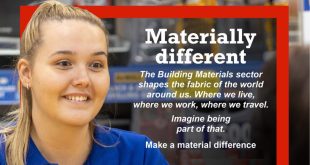There are books of which the backs and covers are by far the best parts
It’s a truth universally accepted that the UK construction industry is a major contributor to our carbon emissions and our negative impact on the planet. So, it’s great to see CO2nstruct Zero – the CLC cross industry change programme to drive carbon out of all parts of the construction supply chain by 2050.
The BMF is one of the organisations putting its weight behind this – it has to be a joint effort. None of this will happen on its own. The main thrusts are:
- Accelerating the shift to zero emission vehicles
- Working with Government to deliver retrofitting to improve the energy efficiency of existing housing stock
- Scaling up industry capability to deliver low carbon heat solutions in buildings, supporting heat pump deployment, trials of hydrogen heating systems and heat networks
- Supporting the development of innovative low carbon materials (in particular concrete and steel) as well as advancing low carbon solutions for manufacturing processes and distribution
- Maximising use of modern methods of construction and improved onsite logistics, reducing waste and transport to sites.
Merchants can play a major role in all of these, as they are the conduit between the manufacturers and the installers and builders, who themselves are the face of the industry to the general public. No matter how much pushing there is from suppliers (and there are some amazing strides being made in terms of packaging, energy use and recycling) and the wider construction industry, it will be by getting to the hearts and minds of householders that the difference will be made.
Which brings me to number two on that list Working with Government to deliver retrofitting to improve the energy efficiency of existing housing stock No matter how many electric or hybrid Volvos and Toyotas we drive around, it won’t make much difference if we are still using too much energy to heat out homes.
Which is why the low take-up of the Green Homes Grant and the subsequent clawing back of the ear-marked money by the treasury is such a disappointment. The original £2 billion in funding is only to be used in the 2020/21 financial year, and any leftover cash won’t be rolled over. As of 26 January 2021, just 17,618 vouchers had been issued to households, accounting for just £73.1 million of the cash set aside to fund the scheme. As a result, only £320 million of funding has been set aside for the scheme in 2021/22. Yet on the evidence of the slow take-up thus far, that £320m won’t be all spent either.
I don’t blame the treasury for wanting the cash back if it’s not going to be spent. There are lots of other areas where that sort of money could be used more fruitfully (don’t get me started on test-and-trace.
Like its predecessor the Green Deal, the Green Homes Grant scheme was developed with the best of intentions and aimed to learn some of the lessons from the over-complication and unwieldy nature of the former. Spoiler alert: those lessons weren’t really learned at all. Green Homes Grant was just as complicated and over-engineered, just in a different way.
On paper, getting three quotes from registered tradespeople before applying for the vouchers seems sensible. The Government doesn’t want to over-pay for work any more than the rest of us do (OK, who mentioned test-and-trace?). But too many people have complained that it’s nigh on impossible to find anyone to quote for the work. Others have struggled to get their heads round the ‘primary work’, which might be low-carbon heating or insulation and ‘secondary work’ such as draughtproofing, upgrading single glazing or installing energy efficient doors. If you don’t have the first, you can’t get funding for the second. And it has to be new work, not replacing something which is already installed, even if it is inefficient. And yet there are plenty of homes that might not be suitable for heat pumps but which could save masses of energy if they had some better double glazing, for example or topped-up insulation in the loft.
If we really are to make a difference and Build Back Greener, or whatever the buzz phrase was, then we need a system that we can afford and that will work (I told you, don’t even think about bringing up test-and-trace). I don’t really know what the answer is and so it’s easy for me to criticise, but I do know that we are running out of time. Saint David Attenborough of Broadcasting House knows this. We all know this. We all need to do our bit, but collectively we need to do rather more than just our bit.
 Builders Merchants Journal – BMJ Publishing to Builders Merchants and the UK merchanting industry for more than 95 years
Builders Merchants Journal – BMJ Publishing to Builders Merchants and the UK merchanting industry for more than 95 years


